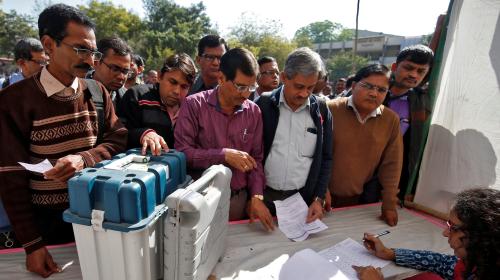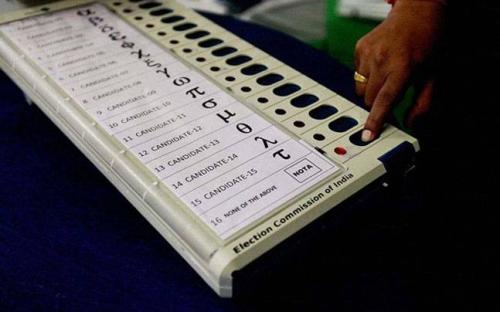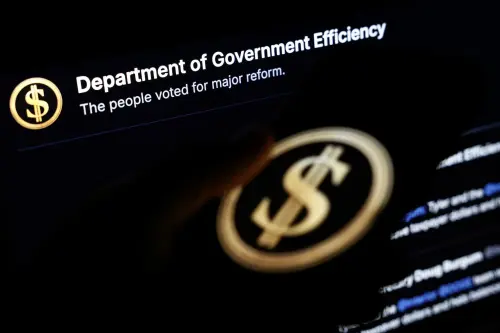Content from the Brookings Institution India Center is now archived. After seven years of an impactful partnership, as of September 11, 2020, Brookings India is now the Centre for Social and Economic Progress, an independent public policy institution based in India.
This article first appeared in The Indian Express. The views are of the author(s).
Free and fair elections to choose political representatives are a cornerstone of a democracy, and a fundamental human right of people. Voting procedures play a significant role in the conduct of free and fair elections in a democracy: These convert voters’ preferences into a political mandate, which forms the basis for policy making. In practice, however, illegal efforts to shape electoral outcomes are not uncommon. Electoral fraud not only undermines public trust in democratic institutions, it also adversely affects the provision of public goods. With electoral fraud, there are no checks on politicians to stop them from spending disproportionately on private goods, at the expense of public goods, to buy the loyalty of a small fraction of people, with whose support they commit fraud.
In India, the largest democracy with more than 800 million registered voters, and a complex multi-party system, electoral fraud has been a leading cause for concern. For example, in several constituencies under the paper ballot system, polling booths would be captured and ballot boxes would be stuffed. To address fraud and simplify the electoral procedure, the Election Commission of India (ECI) introduced electronic voting machines (EVMs) in the late 1990s. An important feature of EVMs was that these could register only five votes per minute: This had significant adverse implications for electoral fraud as polling booths had to be captured for a longer period to rig elections, thereby increasing the cost of electoral fraud. Besides enhancing the fairness of the electoral process, the ECI also envisaged that EVMs would improve the efficiency of tallying electoral results, thereby reducing human error.
Ability of vulnerable citizens (illiterates, females, scheduled castes and tribes) to cast their vote improved significantly after the introduction of EVMs
EVMs were introduced on an experimental basis in 1998 in a few constituencies in state assembly elections. Given their preliminary success, they were then rolled out in a phased manner for subsequent assembly elections. Post-2001, EVMs replaced paper ballots for all state elections. The timing of the assembly elections is state-specific, mandated by the Constitution, and held quinquennially. We exploited these intra- and inter-state variations to study the causal impact of EVMs on electoral outcomes, democracy and development in India.
Using state assembly election results between 1976 to 2007 and post-poll survey data, we found strong evidence that the introduction of EVMs led to a significant decline in electoral fraud. In many constituencies under the paper ballot system, polling booths were captured and ballot boxes stuffed with fake ballots, resulting in an unusually high voter turnout; using state assembly election data, we saw that the introduction of EVMs led to a 3.5 per cent decline in voter turnout — the decline was substantially larger in states prone to electoral fraud, where politicians faced serious criminal charges. These results could also be explained by voters’ negative preference toward voting machines, or the formation of long lines in polling booths due to the upper limit on the maximum votes per minute. To address all of these issues, we analysed post-poll survey data collected by an independent agency. Interestingly, we found that the ability of vulnerable citizens (illiterates, females, scheduled castes and tribes) to cast their vote improved significantly after the introduction of EVMs — furthermore, voters were less likely to report that they did not cast their vote due to fear of violence, vote-capture or that they were prevented from voting. Additionally, we found that EVMs led to a virtual elimination of rejected or error-ridden votes.
Electoral goals often determine the distribution of discretionary grants and public goods in a democracy. Research shows that swing states in India, where the governing parties are aligned with the central government, receive larger shares of federal grants. The supply of electricity, critical for industry, agriculture and household consumption, had been historically driven by politics. Public utility companies, often called State Electricity Boards, control the distribution of electricity. These are susceptible to political capture as the managers are accountable to elected officials. As fair elections provide the electorate a means to improve the responsiveness of elected officials by making them more accountable, we studied the impact of EVMs on the provision of electricity: Using night-time lights captured by satellites (luminosity) as a proxy for electricity provision, we found that the use of voting machines significantly increased the provision of electricity in a constituency. The improvements were particularly striking for the fourth year since elections — that is, just before the upcoming elections.
Maintaining law and order is a fundamental responsibility of the state. In a democracy, where political representatives are elected by the people, it is expected that they will ensure the security of citizens. However, in a rigged electoral system, politicians fail to provide security to ordinary people because they depend on criminal elements in the electoral process: Politicians therefore end up supporting and protecting criminals instead of being able to prevent them from committing crimes. We assembled district-level data on crimes from the National Crime Records Bureau: Our analysis suggested a very strong link between the introduction of EVMs and decline in crime. In particular, we found a great decline in crimes related to murder and rape. Furthermore, this effect is stronger in states where a large proportion of legislators have criminal records.
Transparent elections with fewer rejected votes may change the distribution of actual voters and politicians in office simultaneously. A transparent election may induce the incumbent politician to align with the preferences of the median voter. We focused on electoral competitiveness and found that the introduction of EVMs led to a serious decline in the vote share of incumbent parties; these effects were more pronounced in states prone to electoral violence.
Overall, there was no impact of the voting machines on re-election, but it decreased by 23 percentage points in the states with high re-poll orders issued by the Election Commission. These results suggested that elections became more competitive and less likely to be manipulated by parties in power, which, in turn, had an impact on promoting development by increased provision of public goods.
The Brookings Institution is committed to quality, independence, and impact.
We are supported by a diverse array of funders. In line with our values and policies, each Brookings publication represents the sole views of its author(s).










Commentary
Op-edWhy EVMs are win-win
March 22, 2017